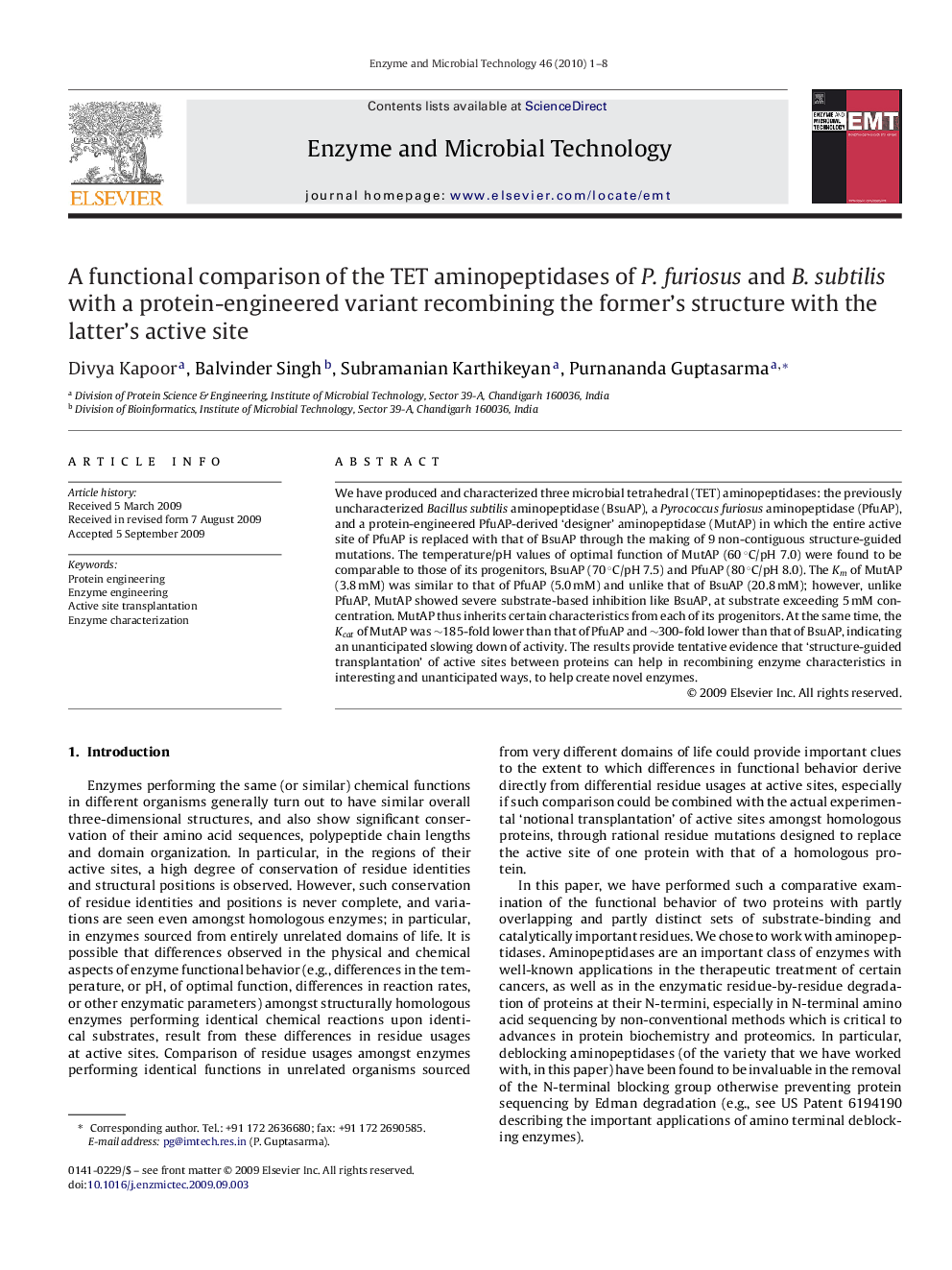| Article ID | Journal | Published Year | Pages | File Type |
|---|---|---|---|---|
| 17792 | Enzyme and Microbial Technology | 2010 | 8 Pages |
We have produced and characterized three microbial tetrahedral (TET) aminopeptidases: the previously uncharacterized Bacillus subtilis aminopeptidase (BsuAP), a Pyrococcus furiosus aminopeptidase (PfuAP), and a protein-engineered PfuAP-derived ‘designer’ aminopeptidase (MutAP) in which the entire active site of PfuAP is replaced with that of BsuAP through the making of 9 non-contiguous structure-guided mutations. The temperature/pH values of optimal function of MutAP (60 °C/pH 7.0) were found to be comparable to those of its progenitors, BsuAP (70 °C/pH 7.5) and PfuAP (80 °C/pH 8.0). The Km of MutAP (3.8 mM) was similar to that of PfuAP (5.0 mM) and unlike that of BsuAP (20.8 mM); however, unlike PfuAP, MutAP showed severe substrate-based inhibition like BsuAP, at substrate exceeding 5 mM concentration. MutAP thus inherits certain characteristics from each of its progenitors. At the same time, the Kcat of MutAP was ∼185-fold lower than that of PfuAP and ∼300-fold lower than that of BsuAP, indicating an unanticipated slowing down of activity. The results provide tentative evidence that ‘structure-guided transplantation’ of active sites between proteins can help in recombining enzyme characteristics in interesting and unanticipated ways, to help create novel enzymes.
